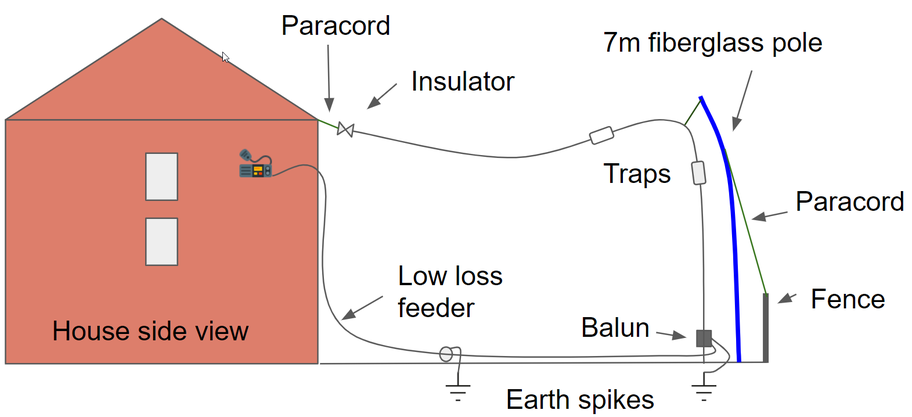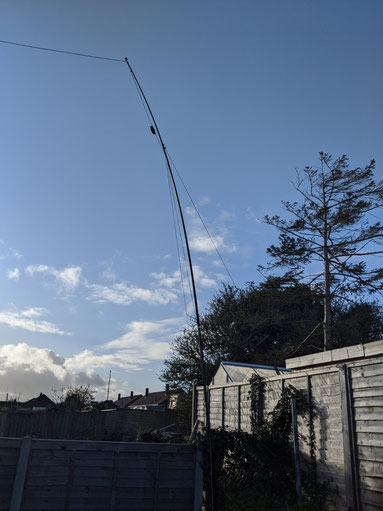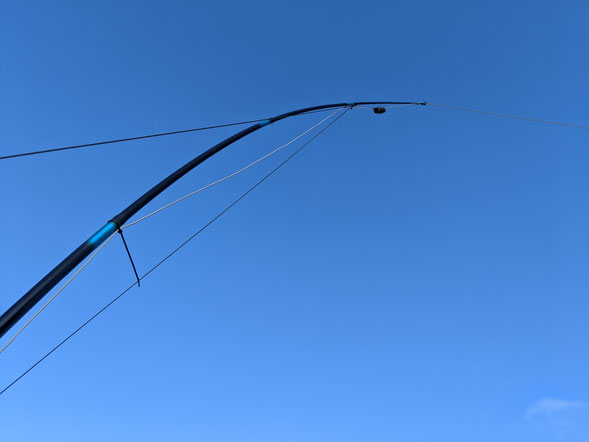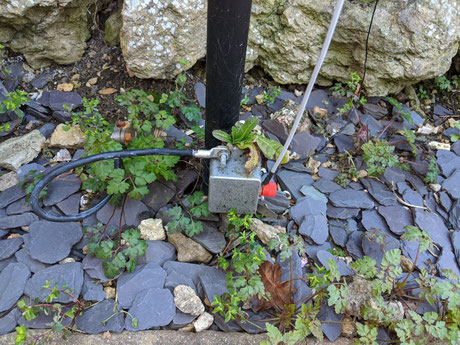- Home
- Learn Morse code quickly
- Data mode communication on the Yaesu FT-817
- Low cost sound card for data modes
- Data mode communication on the Yaesu FT-991
- Data mode communication on the Elecraft KX3
- WSJT-X quick start guide
- Data mode macros
- Amateur radio Q-Codes
- HF contact script
- 2m and 70cm repeater contact script
- Phonetic alphabet
- 20 metre delta loop HF antenna
- Vertical HF whip antenna for 20 or 40 metres
- 10/20 metre Yagi in the attic
- 40 metre loaded dipole
- Multi-band Inverted L antenna
- Make a rotating VHF/UHF HAM SAT antenna array
- 80 metre end-fed antenna
- 40m Hamstick Dipole vs 1/4 wave vertical antenna
- Spectrum Communication trapped dipole 20 & 40 metres
- Artificial grounding with the MFG-931
- Band plans (other site)
- How to add an SDR pan-adapter to your transceiver
- Digital repeater maps UK
- Yaesu FT-817 battery pack
- Make a digital hotspot using a Raspberry Pi
- Make a Digital SWR meter from a kit
- QRP-Labs Ultimate3S US3 beacon building tips
- Make a 100 Watt linear amplifier
- Make a new 8-bit ZX Spectrum from a kit!
- Retro bright plastics
- Bitx40 modifications
- Repair Elecraft T1 ATU after too much power
- FT-817 internal battery power fix
- Fit a dual-band radio to your car
- Make a Go box for mobile operations
- Upgrade the MFJ1234 RigPi with an SSD and Pi4
- ELAD FDM-DUO to Hardrock50 interface
- CAPA Software
Multi-band HF inverted L antenna system
Some HF antenna designs can often be too big to install in the space you have available. Inadequate height, or bending of antenna legs can significantly compromise antenna performance. However, there are some antenna solutions which have been designed to overcome this problem. For example the inverted L antenna can be easy to install and offers excellent performance when there is not room for a conventional dipole.
The inverted-L HF antenna provides a compact solution and offers superb TX and RX characteristics. It's half the size of a dipole and allows for an optimal installation due to it's convenient configuration. Perfect for a typical home and garden arrangement.
The multi-band version of an inverted L is smaller than the mono band version, the use of traps reduces the overall length of the antenna due to their inductance. For me, there is no doubt that this is the best antenna configuration for my home.
Below I'll share how I installed this antenna in to may back yard at a good height with little or no compromise.

The Spectrum Communications inverted L antenna
To be clear, I'm only going to talk about how I installed this antenna. For me, installation has always been a difficult side of HF antennas.
A complete inverted L antenna system can be purchased on the internet from many vendors, alternatively you can make one. I decided to buy the best, and therefore I ordered a 20/40/80 metre inverted L antenna system from Spectrum Communications.
I used this antenna supplier because their products are made to a very high standard. These antennas are robust and their inverted L antenna includes a balun. The antenna wire actually utilises screened cable to help reduce impedance and improve antenna gain.
Mounting the inverted L using a fiber glass pole (if you don't have a tree)
So how do you mount this type of antenna? There are many internet references showing the use of a tree...But I don't have a tree at the end of my garden!....Also, how do you earth it?
For the tree, I used a 7 metre fibreglass flexible flag pole to support the antenna. this worked great. These poles are very robust and can support your antenna at the very tip of the pole. They are easily available from the internet or from your local fishing shop. These are not fishing poles, these are often used for usually flying flags.
They are telescopic, so to keep the pole fully extended, I simply wrapped electrical insulation tape over the joints. The pole was guyed at the top with two pieces of Para-cord, these were secured off of two fence posts using cleats so the antenna tension could be adjusted easily.


Feeding the antenna at the furthest point from the house
The inverted L should be fed away from the house, this will also reduce noise and help keep things quiet. This also keeps the vertical portion of the antenna clear of obstetrical. I used low loss coax to do this. I also added a water proof box and a connection point half way along so I could possible install an antenna switch for more antennas in the future.
Good grounding is essential with this antenna design
A good ground connection is required at the base of the antenna, this is connected to the balun. I used an electrical earth spike purchased from a local hardware store to achieve this.
I also grounded the coax along the length of the feeder line. To do this I used an PL249 lightning arrestor as they come with a handy earthing point.

An RF choke can help
After a bit of research on the internet, some sites recommended the the addition of a simple RF choke or common mode choke to help improve this type of unbalanced antenna arrangement.
To make an RF choke I wound a couple of meters of flexible coax in to a coil, I then threaded the coils of coax through some ferrite rings.
The HF coke helps create a high impedance path on the screen of the coax, preventing RF from traveling back into the shack.
The RF choke is inserted into the feed line at a suitable point, ideally a quarter wave away from the base of the antenna.

An antenna tuner maybe required
For me, I found that 20 and 80 meters presented a very good match without the need for a tuner. On 40 metres a 1.7:1 match was seen, so a tuner was used for this band. Good news!
Feeding the antenna at the end of the garden does mean greater losses due to the length of the feeder line, but when I worked the losses out, I found these to be very small when compared to the advantage of having a high and correctly installed antenna.
'Inverted L' multi-band antenna summary
This is the best performing antenna I have found so far for my particular house configuration. The use of a fiberglass pole easily allowed for good vertical height to be achieved. This helped keep the antenna away from the house reducing EMI noise, the vertical portion of the antenna also promotes good DX contacts due to the shallow radiation angle.
I have had this antenna up for one year now, the fiberglass pole has been very robust to some pretty strong storms, no problem at all.
This is the antenna I would recommend for most people where space does not allow for a full size dipole. The spectrum communication inverted 'L' antenna is made to a very high standard. Highly recommended.
Return to the QSO Shack Homepage.
Please like or share this page:
This site is sponsored by: AdaptiveBMS CAPA software for business improvement
Contact us: radio@adaptivebms.com
Copyright © 2011-2020 Adaptive Business Management Systems Ltd. All rights reserved.

